

Think of chaste tree (Vitex agnus–castus) as an equally showy but less invasive alternative to the ubiquitous butterfly bush (Buddleia davidii). A shrub or small tree that behaves as a dieback perennial in the coldest fringes of its USDA Hardiness Zones 5b to 9 hardiness range, it bears candelabras of lavender-blue flowers from summer into fall, enticing bees, butterflies, the occasional hummingbird, and other winged visitors. Attractive, five-fingered, gray-green leaves make a nice textural compliment to the steepled blooms. Adding to chaste tree’s allure is the pleasantly pungent fragrance of all its parts (as might be expected of a member of the mint family).
Chaste Tree Hardiness and Habit
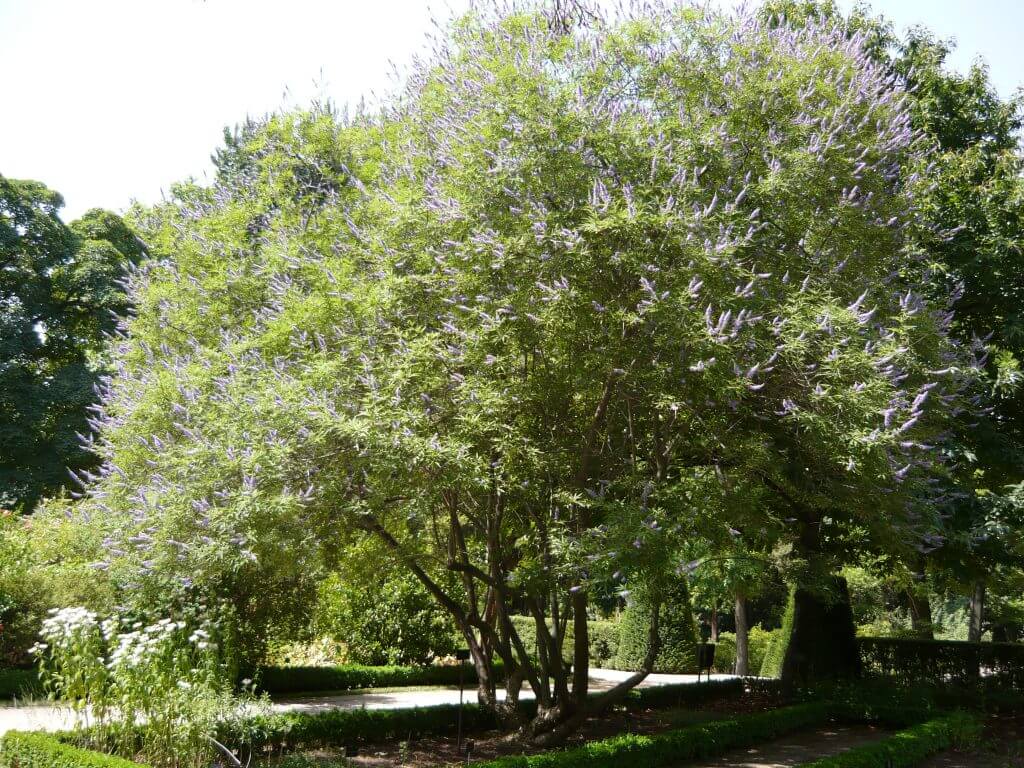
Chaste tree has long been grown in warmer regions of the U.S., where it typically forms a multi-stemmed, 15- to 20-foot tree. But it’s arguably an even better fit for gardens in USDA Zones 5 and 6, where it usually remains much more compact thanks to winter dieback. Like butterfly bush, in these colder regions, it resprouts from the base in late spring, mushrooming into a rounded, 3- to 6-foot shrub that flowers on new growth. Furthermore, unlike butterfly bush, it doesn’t seed itself prolifically after flowering (although self-sowing can be a problem in the Southwest and California).
Chaste Tree Growing Needs
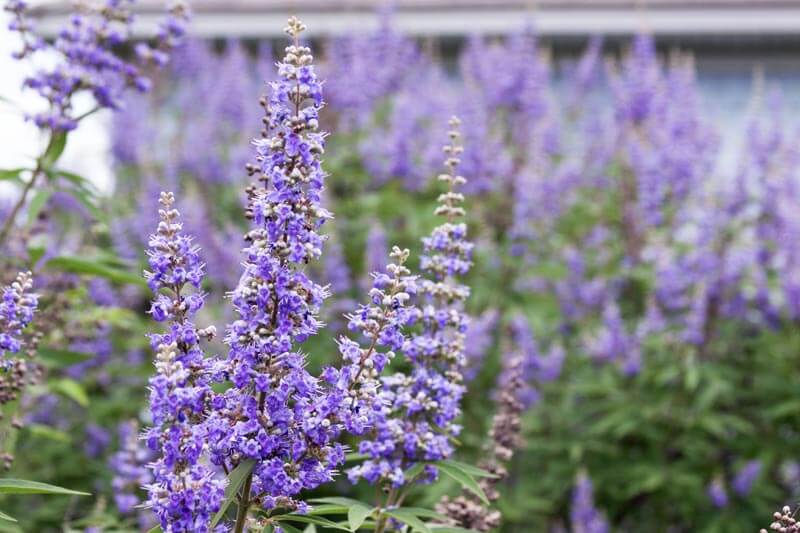
Another point in chaste tree’s favor is its toughness. It takes readily to just about any sunny, not-too-soggy site; tolerates drought and salt; and rarely requires special treatment. In heavy clay soil it may benefit from the addition of Fafard Premium Natural & Organic Compost for increased organic matter and drainage. Yet, despite its many merits, chaste tree has received relatively little attention from gardeners, perhaps because of the scarcity of cultivars selected for growth habit, flower color, and other traits.
Chaste Tree Varieties
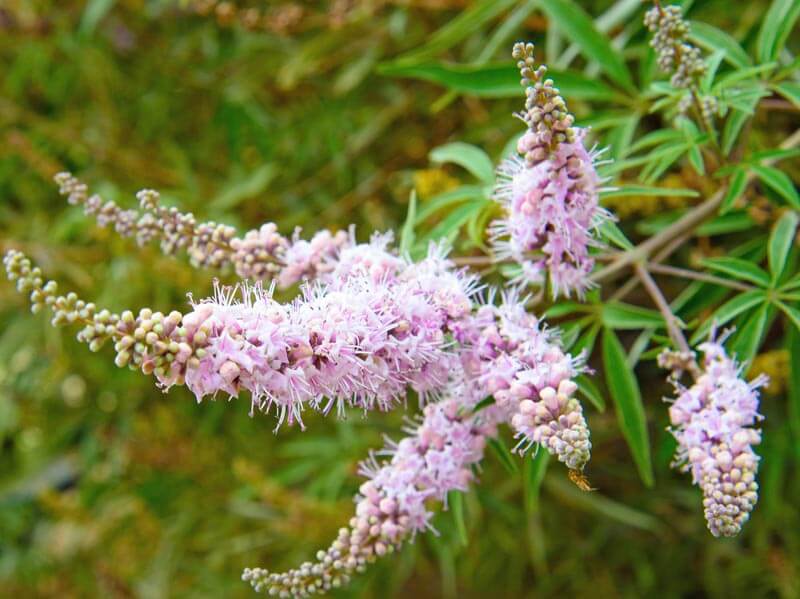
All this is changing. A number of recently introduced cultivars mature as small to medium shrubs rather than as bushy mini-trees, broadening its versatility in Southern gardens. Additionally, these recent introductions come in a range of colors including pink, white, and various shades of blue. Wherever you garden, the possibilities for chaste tree are greater than ever – including as a summer-blooming centerpiece for containers.
Among the smallest of the new cultivars is ‘Blue Puffball’, which forms a dense, 4-foot mound covered with deep sky-blue spires. It makes an obvious choice for containers and perennial borders, perhaps in place of Caryopteris. As with all forms of chaste tree, flowering continues from summer to fall if spent blooms are regularly deadheaded. The somewhat larger ‘Blue Diddley’ offers spikes of the typical lavender-blue on densely borne stems that top out at 6 feet or so. Larger still, ‘Delta Blues’ produces spires of rich purple-blue flowers on 8- to 10-foot plants set with elegant, relatively narrow-fingered leaves.
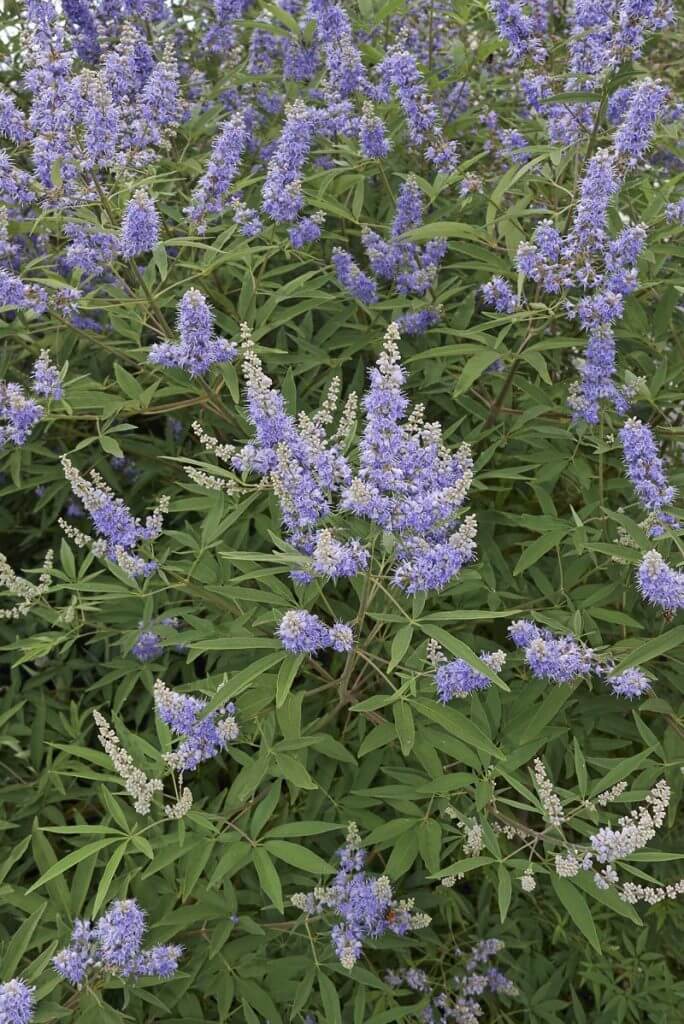
Compact chaste trees of another color include ‘Pink Pinnacle’, prized for its abundant mid-pink spires on compact, mounded, 4- to 6-foot plants. Paler in color and larger in growth, ‘Blushing Spires’ bears shell-pink blooms and matures at 10 to 12 feet tall and wide. Compact white cultivars – such as the 8-foot-tall ‘Dale White’ – are especially rare (grab one if you see one!).
Of course, as mentioned earlier, in USDA Hardiness Zones 5 and 6 full-size cultivars such as white ‘Silver Spire’, deep lilac-blue ‘Shoal Creek’, and sapphire-blue ‘Le Comte’ behave as small to medium shrubs due to winterkill. In milder regions, they can be treated as small trees or maintained as shrubs via an annual hard pruning in early spring.
Other Vitex Species
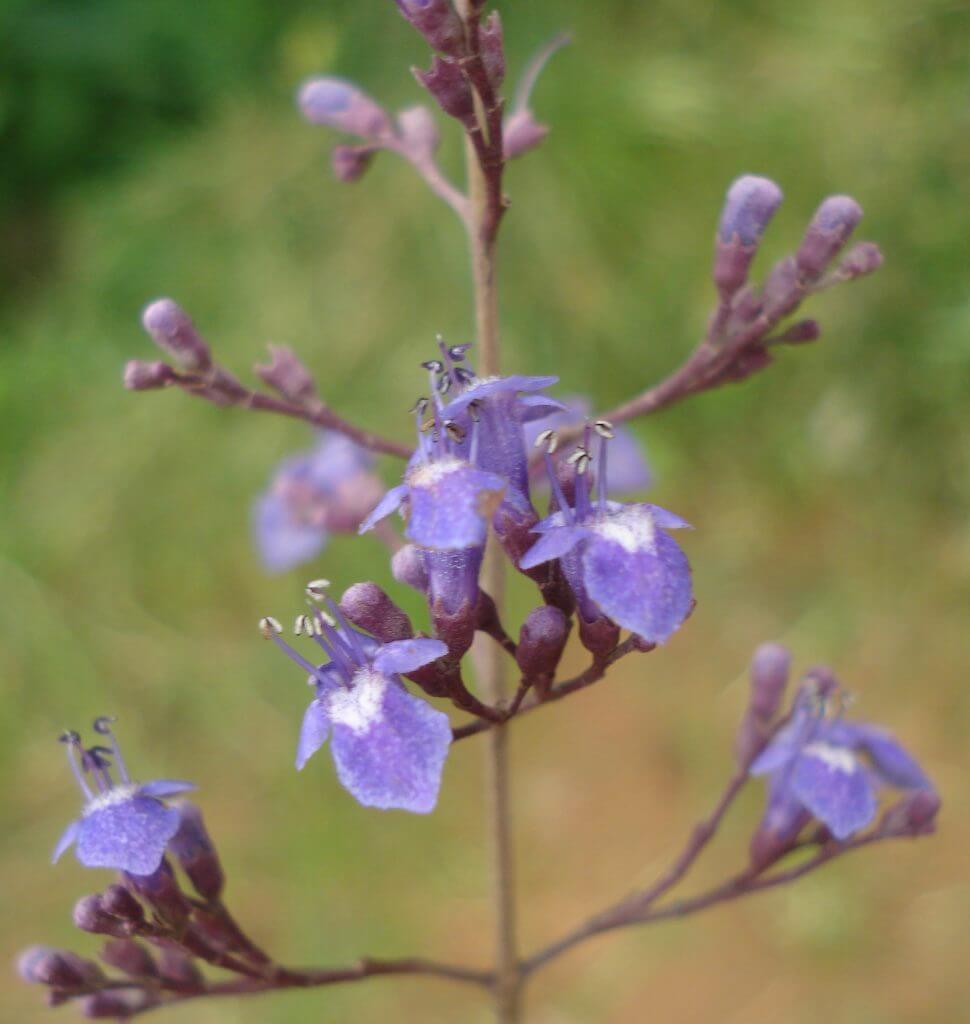
Another excellent summer-bloomer for Zones 5 to 9 is chaste tree’s hardier and more obscure relative, Chinese chaste tree (V. negundo). Although less showy in flower, it surpasses chaste tree in its lacy, deeply incised foliage, which in varieties such as heterophylla rivals that of a fine Japanese maple. Hybrids between Vitex negundo and other Vitex species (as well as between chaste tree and its kin) are in the works, so stay tuned! Many more summer-blooming treasures for your garden (and containers) are yet to come from the Vitex tribe.
